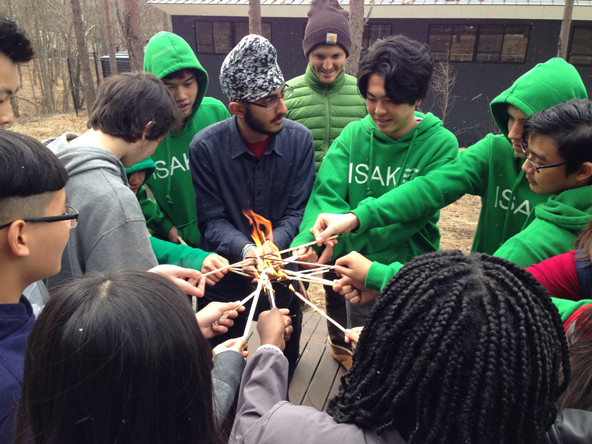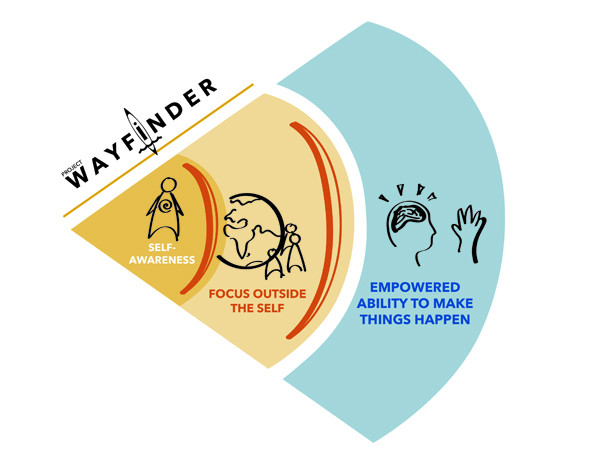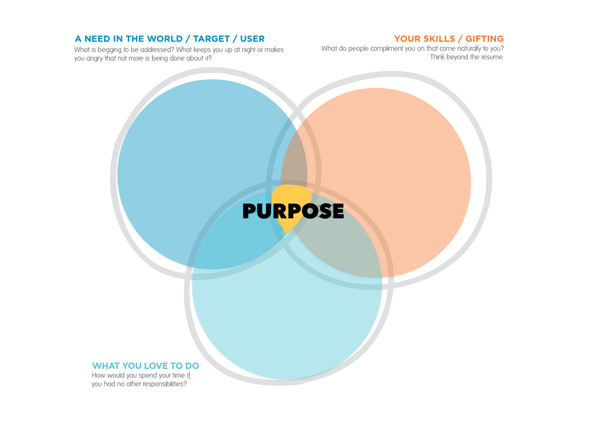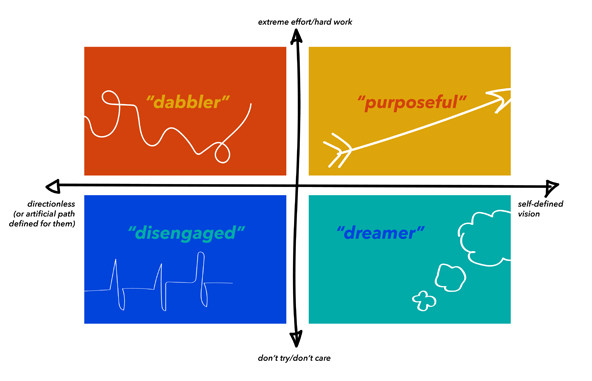High school should be a launching pad to a meaningful life. Instead, it’s often a missed opportunity filled with apathy, purposelessness, and incredible amounts of stress. The three words most frequently used by students in the United States to describe their high school experience are “tired,” “stressed,” and “bored.”
This is largely because US high schools are unengaging and based on a hundred-year-old model designed for a different era. US high schools are depressingly archaic, reminiscent of giant factories or prisons, with block scheduling and teachers still lecturing to students in time-chunks that have no correlation to teenagers’ brain and body chemistry. We still have rigid, industrial-era roles for adults—principal, vice-principal, counselor, and teacher. This antiquated model, coupled with the “college arms race” and the standardized testing craze, is wreaking havoc on students’ mental and physical health.
The Model T didn’t emerge from strapping an engine to a horse, and Tesla didn’t emerge from putting an electric engine into an existing car. Yet when it comes to school design, we are trying to innovate off a completely outdated industrial model, rather than rethinking its fundamental structure.
It’s time to boldly reimagine the high-school experience—using the power of human-centered design, the latest adolescent neuroscience, and purpose learning—to usher in a new era of education that prepares students for this century, not the last.
Asking “How"
Are you enjoying this article? Read more like this, plus SSIR's full archive of content, when you subscribe.
Over the past century, high school education debates have focused largely on what we teach students (the curriculum) while ignoring how we design school itself. From a design perspective, our current debate is kind of like people arguing over the interior design of a house without considering whether it’s the right house. Why argue about the furniture in the living room, the kitchen, and the bedroom (the curriculum) when the house is old, failing apart, and not right for your family’s needs anyway (the current high school model)?
There is so much potential for change if we creatively address how we schedule the school day, how we build learning spaces, how we deliver content, and how we structure the roles of adults vis-a-vis students. Take scheduling, for example. In my conversations with students, they say they pay attention in class 15-60 percent of the time. This is partly due to the teaching schedule. Research tells us that teenagers pay attention better when they sleep in later, move more during the day, and have shorter hours of direct lecture. It’s crazy to expect them to sit down at a desk and absorb information for 6 straight hours starting at 7:30 am. Yet, we have designed a school day that forces them to do so and punishes them when they don’t. Unless we redesign the system, we are going to keep delivering less-than-optimal learning environments for students.
Bringing Back the “Why”
Why do students “do” high school? One hundred years ago, this was pretty clear: A high school education was essential to moving up the economic ladder and gave people a much greater chance of landing a long-term, high-paying job.
Today, the answer is not so clear. Of course, graduating from high school and college still correlate with increased earning potential over a lifetime, but it doesn’t set people up for a lifetime of work. According to one study, 70 percent of jobs that will exist in 20 years don’t even exist yet. Clearly, students need to learn how to be adaptable and creative, and to ask good questions and figure out how to answer them. While there are some exceptions, the majority of today’s high schools focus on the regurgitation of facts (as evident in most AP curriculums). Almost nothing that US high schools formally evaluate is designed to actively develop or increase a student's self-regulation or emotional awareness—skills that employers like Google most desire today.
But high school is about more than job readiness; it’s also a critical time for human development and establishing healthy lifelong habits. In his book Age of Opportunity: Lessons from the New Science of Adolescence adolescent psychology expert Laurence Steinberg explains, “As a second and final stage of brain plasticity, adolescence is probably the last real opportunity we have to put individuals on a healthy pathway, and to expect our interventions to have substantial and enduring effects.” The teenage years are a time when students can start imagining the lives they want to lead, and can develop the internal compass and traits that will help them live a life of purpose, meaning, and devotion to a cause bigger than themselves. This is where our high schools are really failing students. Almost nothing in the current system speaks to developing the voice of young people, their own dreams, and a sense of what’s really important to them. Instead, the system focuses on validating rampant external achievement and measuring students’ knowledge through standardized testing. No wonder students are bored, tired, and stressed.
So What Could We Change?
To design new learning environments that offer purpose-seeking chances for youth and greater agency for educators, we need to:
- Incorporate modern neuroscience: Retool the school day in a way that takes into account the circadian rhythm of teens and create learning environments based on the latest research on teen brain development. Organizations like the Institute for Applied Neuroscience are actively trying to educate policymakers about the need to adapt school policies so that they better align with the neuro-functioning of young adults.
- Include project-based learning and differentiated instruction: Students need more than lectures; studies show teens are most engaged and motivated when they can connect their classroom learning to real-world events and projects. This is not revelatory, but it’s incredibly important: High schoolers currently spend the vast majority of their time inside a classroom doing little to prepare them for life after school (whether it’s college or a job).
- Help students feel like they matter: One of the most common findings at schools is that students have higher results when they feel like they matter and belong at school. Actively cultivating an inclusive school culture can help students develop this sense of belonging.
- Train teachers to play the role of mentor. Ask anyone who impacted them most in high school, and they’ll likely mention a teacher who took the time to get to know them and help them pursue something they cared about.
- Build better physical spaces: Most high schools today look just as they did a century ago—colossal buildings that resemble industrial plants or prisons. Students do better in built environments that help design and boost creativity. (In Canada, the government is actively developing green schools that do this.) It doesn’t have to be expensive—simply re-designing a classroom or letting students spend more time outside goes a long way.
- Teach more than academic skills: Steinberg argues that self-regulation should be the chief goal of adolescent education. Schools have increasingly incorporated social-emotional learning (SEL)—teaching students how to navigate their emotions and relationships—over the past 25 years, and more recently, mindfulness education has begun taking off. Studies show that students with mindfulness are more mentally healthy and do better in academic learning.
The Path Forward
In our research, my design partner, Kelly Schmutte, and I came across a number of organizations asking similar questions to those I raise here. These organizations broke down into two different camps:
- Organizations running or trying to launch brick-and-mortar high schools. Two networks of schools—Big Picture Learning and Expeditionary Learning—do a great job of allowing their students to explore ideas outside of school and develop meaningful relationships with adults. We also found a new wave of high schools launching across the country—including a new high school in Oakland, Calif., called DSx—that are challenging the paradigm of high school education. Rather than starting with the 19th-century model and trying to adapt it for today’s times, these schools are asking and designing from this question: “What do teenagers most need to thrive in today’s world?”
- Organizations or programs working to re-design roles within high schools or do direct, purpose-driven programming with high school students. The Future Project, for example, assigns each school a coach (known as a “dream director”) who helps inspire students to figure out their dreams and aspirations, and then re-shape school culture around these projects. Noble Impact introduces young people to purpose-provoking curriculum to help them answer the “why” question.
 Wayfinder Week at ISAK, an international boarding school founded on mindful self-discipline and design thinking. (Photo by Kelly Schmutte)
Wayfinder Week at ISAK, an international boarding school founded on mindful self-discipline and design thinking. (Photo by Kelly Schmutte)
 Core to our mission at Project Wayfinder is helping students develop and deepen both their internal and external awareness, and strengthen the bridge between them. (Image by Kelly Schmutte and Patrick Cook-Deegan)
Core to our mission at Project Wayfinder is helping students develop and deepen both their internal and external awareness, and strengthen the bridge between them. (Image by Kelly Schmutte and Patrick Cook-Deegan)
Throughout the spring, we’ve experimented with the latter. Wayfinder Weeks programming, for example, allows students take a step back from their day to day, and ask what they really want from life, why, and what they need to do get there. We’re also developing a series of products that teachers can use in advisory or homeroom periods to help high school students develop a sense of purpose.
Our work is based on the research of Bill Damon at Stanford’s Center for Adolescence, who has been researching the formation of purpose in young people for decades. We believe that if students take a step back from their habitual routines to ask the “why” question, they will be able to better understand “how” to do it and be more motivated to do the “what” of it.
 Based on Damon’s work, we came up with this framework to help students think about purpose. (Image by Kelly Schmutte and Jessica Munro)
Based on Damon’s work, we came up with this framework to help students think about purpose. (Image by Kelly Schmutte and Jessica Munro)
 In The Path to Purpose, Damon describes four broad categories of youth in the realm of purpose development; we must equip more students to guide themselves to the “purposeful” quadrant. (Image by Kelly Schmutte, category descriptions by Bill Damon)
In The Path to Purpose, Damon describes four broad categories of youth in the realm of purpose development; we must equip more students to guide themselves to the “purposeful” quadrant. (Image by Kelly Schmutte, category descriptions by Bill Damon)
What big issues do students want to address in the world and why? What kind of life do they want to lead? What makes them come alive? What do they want to contribute to the world, and what do they need to learn to do so? What would our world look like if every young person’s high school education were based around answering these questions, not about jumping through a series of meaningless hoops? My hunch is that we would have a much more vibrant, thriving, and purposeful world than the one we live in today.
Support SSIR’s coverage of cross-sector solutions to global challenges.
Help us further the reach of innovative ideas. Donate today.
Read more stories by Patrick Cook-Deegan.

